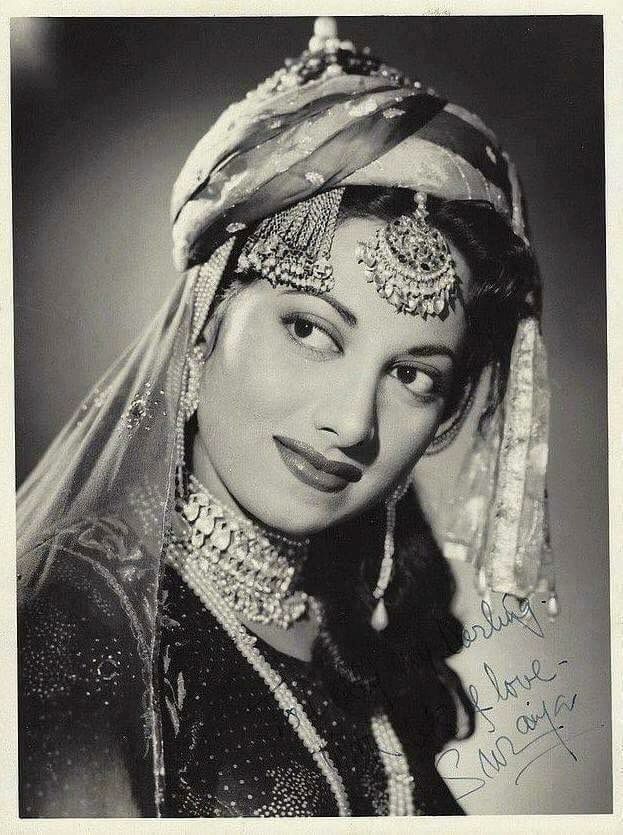Suraiya: 6 Powerful Reasons She Continues to Captivate Generations
Suraiya, the celebrated singer and actress of Hindi cinema, holds an everlasting place in the hearts of millions. With her melodious voice and captivating screen presence, Suraiya became a beloved figure in Indian cinema. Her legacy has transcended time, leaving a lasting impact on both the entertainment industry and Indian culture. Through this article, we’ll explore the many facets of Suraiya’s life—from her early days to her lasting influence on society and the world of music.
Early Life and Beginnings
She, born as Suraiya Jamaal Sheikh on June 15, 1929, in Lahore (now Pakistan), grew up in a musical environment. Her maternal grandfather, Maulana Abdul Ghafoor, was a renowned singer, and it was through him that Suraiya first developed an interest in music. Suraiya’s family later moved to Mumbai, where she started her journey in music and film at a very young age.
Suraiya’s break came when she was just 14 years old, performing as a chorus singer in the 1941 film Usman Ghani. Her soulful voice caught the attention of several music directors and producers, and her career took off rapidly thereafter. Her talent shone through in films during the 1940s and 1950s, and she soon became one of the top playback singers of the time.
The Golden Era of Bollywood and Stardom
It’s rise to fame is intertwined with the golden era of Hindi cinema. She became known for her roles in films such as Taqdeer (1943), Anmol Ghadi (1946), Badi Didi (1949), and Dastan (1950). Suraiya’s voice, often described as melodious and enchanting, became a staple of Hindi film music. She was known for her ability to infuse a deep sense of emotion into every song, capturing the hearts of audiences with her charm.
In addition to her skills as a singer, Suraiya was a talented actress, often paired with the most famous heroes of the time, including the legendary actor Dev Anand. Their on-screen chemistry was unmatched, particularly in the film Jeet (1949), where Suraiya’s presence and beauty were as integral as her singing talent. Her musical numbers in films like Taqdeer and Anmol Ghadi became iconic and are still cherished by fans today.
Suraiya’s distinctive style, both as a singer and as an actress, made her a major star in Hindi cinema. She was often regarded as the voice of romance, with her songs expressing love, longing, and the joys and sorrows of relationships.
Impact on Music and Cinema
It’s contribution to the world of music cannot be overstated. She was trained in classical music, which gave her songs a depth and richness that set her apart from her contemporaries. Her voice, combined with the compositions of legendary music directors such as Naushad, Shankar Jaikishan, and S.D. Burman, resulted in timeless tracks.
Some of her most memorable songs include “Meri Nazron Ne Tum Ko” from Anmol Ghadi, “Teri Parchhaiyon Mein” from Dastan, and “Dilhara Dilruba” from Shaan (1954). These songs continue to be loved by listeners, illustrating her lasting influence on Indian film music.
Her songs were also remarkably versatile, ranging from romantic ballads to patriotic anthems. Suraiya had the rare ability to bring emotional depth and storytelling into every note, captivating her audiences with every word she sang.
Challenges in Personal Life
Though It’s career was a success, her personal life was marked by struggles, particularly with her love life. Suraiya was in a highly publicized and much-discussed romantic relationship with Dev Anand, one of the leading actors of the time. Their relationship, however, was marred by opposition from Suraiya’s family and societal pressures. This ultimately led to the couple’s separation, leaving a significant mark on Suraiya’s personal life.
Despite the challenges she faced in her relationships, Suraiya’s professional life continued to flourish. Her resilience in continuing to create music and perform despite personal hardships is a testament to her strength and passion for her craft.
Later Years and Legacy
In the 1960s, Suraiya gradually withdrew from films, choosing to live a more private life. Her decision to retire from acting and singing shocked her fans, but she remained a beloved figure in Indian culture. Even in her later years, she continued to be a symbol of grace, talent, and perseverance.
Suraiya passed away on January 31, 2004, leaving behind a legacy that continues to inspire musicians, actors, and fans alike. Though her time in the limelight was relatively short, her impact on the world of music and cinema is profound and enduring.
FAQs
Q: What were Suraiya’s most famous songs?
A: Some of Suraiya’s most famous songs include “Meri Nazron Ne Tum Ko” from Anmol Ghadi, “Teri Parchhaiyon Mein” from Dastan, and “Dilhara Dilruba” from Shaan.
Q: Was Suraiya married?
A: She was never married, and her relationship with Dev Anand is one of the most talked-about aspects of her personal life.
Q: When did Suraiya retire from acting and singing?
A: She gradually withdrew from acting and singing in the 1960s, choosing to live a more private life.
Q: Why is Suraiya considered a legend in Indian cinema?
A: She is considered a legend for her beautiful voice, her acting talent, and her lasting contribution to Indian cinema, particularly in the 1940s and 1950s.
Significance Legacy
Her impact on Bollywood and Indian cinema is undeniable. She was not only a beautiful and talented actress but also a beloved singer whose voice defined an entire era of Hindi film music. Her songs continue to be celebrated by music lovers, and her films remain an integral part of Bollywood’s golden history.
As a public figure, Her life also symbolizes resilience, grace, and the power of talent to transcend personal challenges. Even though she faced personal and professional setbacks, she never compromised on her art, and that determination continues to inspire generations of musicians and performers.
Wishing Continued Reverence
On this note, we remember Suraiya for her unforgettable contributions to Indian cinema. She was not just a star on the screen, but a shining light whose legacy continues to captivate and inspire us. We wish her soul eternal peace, and may her music forever echo in the hearts of those who love her work.











Good web site! I really love how it is easy on my eyes and the data are well written. I’m wondering how I could be notified when a new post has been made. I have subscribed to your RSS feed which must do the trick! Have a great day!